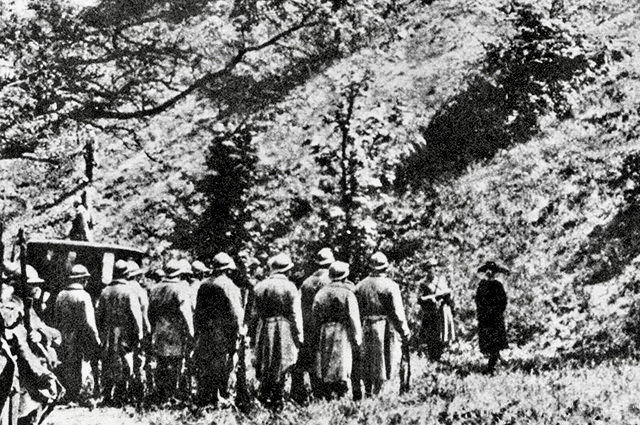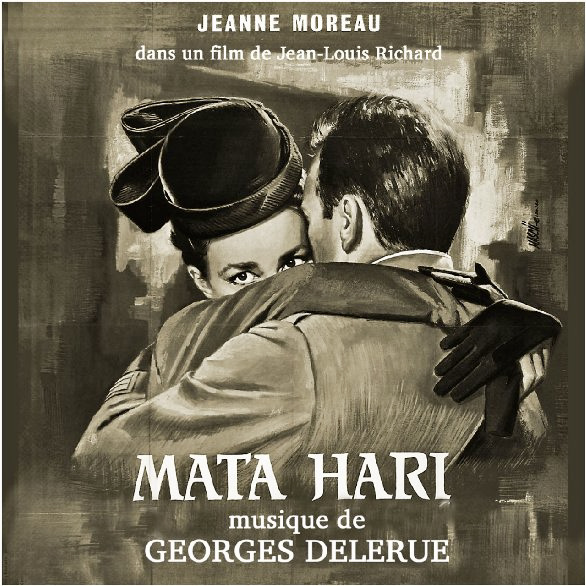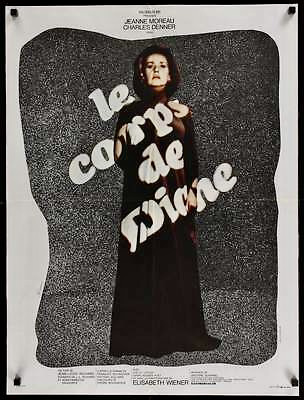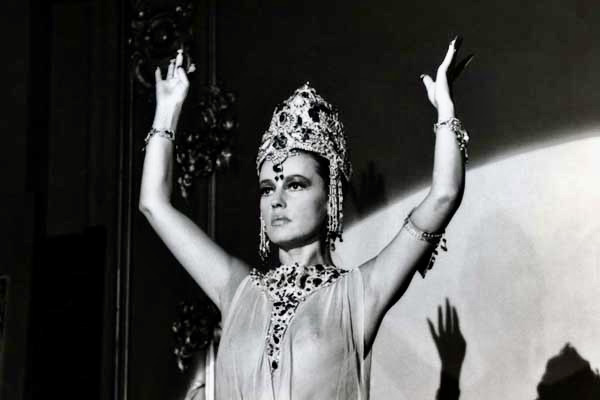
The road to international fame was a long and arduous journey for Jeanne Moreau but it all began in 1948 when she became a stage actress at age 18. She started appearing in films a year later though it wasn’t until 1958 that she emerged as an important French actress, thanks to two Louis Malle features, the noir thriller Elevator to the Gallows and the scandalous romantic drama, The Lovers. More famous career-defining roles followed such as Michelangelo Antonioni’s La Notte (1961), Francois Truffaut’s Jules and Jim (1962), Jacques Demy’s Bay of Angels (1963) and Luis Bunuel’s Diary of a Chambermaid (1964). Yet, in terms of global recognition, she probably reached her peak in the mid-sixties when she appeared in big-budget Hollywood productions like The Victors (1963), The Train (1964) and The Yellow Rolls-Royce (1964). It was during this period that she appeared in Mata Hari, Agent H21 aka Secret Agent FX18 (1964), one of her least known and rarely seen movies.

Directed by her former husband, Jean-Louis Richard, who also co-wrote the screenplay with Francois Truffaut, Mata Hari, Agent H21 seemed like an ideal character for Moreau to portray. Based on the infamous real-life exotic dancer who worked as a secret agent, the heroine is a charming, sexy and manipulative courtesan who could also be haughty, cold-blooded and self-destructive much like the femme fatale Catherine from Jules and Jim. Unfortunately, Moreau faced the challenge of playing a character who had already been immortalized by two other actresses before her, Greta Garbo in the 1931 Mata Hari, directed by George Fitzmaurice, and Dishonored (1931), Josef von Sternberg’s loose adaptation of the Mata Hari legend with Marlene Dietrich in the title role.

Most film historians and film critics consider Marlene Dietrich’s performance as Austrian spy Marie Kolverer aka X27 the quintessential Mata Hari prototype while Greta Garbo seems much more subdued in a film that is plodding and uninspired in comparison. Moreau’s performance falls somewhere between the two; she is clearly more animated than Garbo but lacks the worldly insolence of Dietrich. Her portrayal runs hot and cold, alternating between a supremely confident seductress and a spoiled, unsympathetic narcissist. It is easy to see why Mata Hari, Agent H21 is not one of her better-known movies yet it has plenty of attributes that make it worth seeing for fans of Moreau and French cinema.
What is actually known about the real-life Mata Hari is a mixture of truth, fabrication and rumor and the legend is more appealing than the facts. However, most biographers agree on the following. She was born Margaretha Geertruida Zelle in the Dutch town of Leeuwardne in 1876. When she was 18 she married a 39 year old soldier named Rudolf MacLeod and they moved to Java where she bore him two children, a boy and girl. The marriage failed and the couple divorced in 1902. After that, she moved to Paris and worked as an artist’s model before becoming an exotic dancer. She quickly made a name for herself with her daring specialty act, a strip tease in which she removed everything except her jewelled head-dress and breast-plate.
At the same time, she invented a fictitious backstory about her life, claiming she was born in Java and was the daughter of an Indian temple dancer. She became a famous courtesan with high society connections but when WWI broke out, she used her considerable influence and charm for the purpose of espionage and this is where the truth becomes murky. Some accounts state she was recruited by the Germans in 1907 to steal French military services from officers who shared her bed, but other historians believe she was initially hired by the French to pose as a German agent. Mata Hari, Agent H21 presents her as a German operative but also makes it clear that she was being exploited by her employers and would eventually be used as a scapegoat when her usefulness had run its course.
The film’s finale also follows the facts of the case in that Mata Hari was arrested by French authorities for espionage in February 1917, given a trial and executed by firing squad on October 15 of that year (she was 41 years old). Although the French press reported that her theft of military secrets was responsible for the deaths of thousands of soldiers, there is little evidence that her spy activities succeeded in obtaining any top secret information that affected the war. Instead, her notoriety, trial and execution provided a public distraction from the grim realities of the war.
Richard and Truffaut choose to open their film after Mata Hari, who goes by the name Greta, has already become a cultural sensation in Paris and the first scene presents her stage act at the Alcazar nightclub where she enjoys an international clientele. Despite being billed as the famous “Sun Dancer,” Greta’s act is more of a mélange of poses and gestures with her fingers indicating code numbers to her German contact in the audience. Moreau looks spectacular in her bejeweled head-dress, gem-encrusted necklace and see-through dress which provides a comic punchline: an elderly male patron with opera glasses fixates on her breasts before his wife snatches the glasses away. This entire sequence, which borders on self-parody, establishes Greta’s mysterious façade and then her true nature begins to emerge in the behind-the-scenes drama that unfolds.

Mata Hari, Agent H21 is part love story, part espionage thriller but the romantic interludes are the least effective part of the film. Greta’s ongoing affair with French officer Francois Lasalle (Jean-Louis Trintignant) is loosely based on Mata Hari’s lover Vladimir de Masloff, a young Russian captain who was blinded in one eye during combat (the Trintignant character sustains a leg injury). Unfortunately, Lasalle remains an undeveloped character and gives Trintignant very little to do other than portray the officer as chivalrous, brave and hopelessly naïve in regards to Greta’s duplicitous nature. It is also surprising that there is little chemistry between the two actors and their love scenes lack conviction.
Much better are the depictions of Greta’s spy exploits and there are several sequences that generate considerable tension. The first one involves Greta and her German ally’s attempt to steal top secret papers from Lasalle’s attache case which is handcuffed to a chair in her home and involves a complicated scheme of accessing the papers while Greta keeps Lasalle distracted from discovering the ruse. Even more nerve-wracking is her daring scheme to seduce French colonel Pelletier (Frank Villard), borrow the key to his office safe and steal diagrams of a munitions plant for the Germans. The plot almost goes awry when Pelletier tries to force himself on Greta and she has to knock him unconscious with a champagne bottle, which forces her to improvise on her desperate situation. Although she succeeds in accessing the safe, she mistakenly leaves behind evidence of her theft, a playbill from the Alcazar with the vault codes written on it.
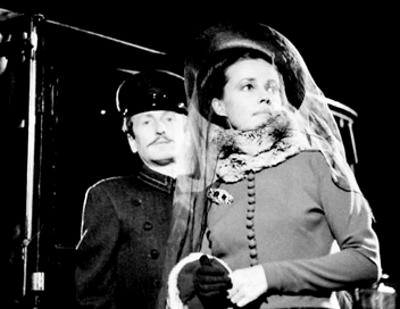
Certainly no seasoned spy would be as careless as Greta in her assignments but Richard’s narrative seems to indicate that her heart just isn’t in the work anymore and leads to her downfall. Luckily, Greta’s evidence at the scene of the crime was never discovered because it was removed by Julien (Claude Rich), her chauffeur. In a surprising mid-point revelation, he confesses he is also working undercover for the Germans and has been assigned to watch after and protect her during her missions. It is also with Julien that Greta finally confronts the extreme nature of what she is doing. The duo run through a road block, are pursued by two French officers and Julien shoots them both in cold blood to Greta’s horror.

One would expect that for a story that ends in the arrest, trial and execution of the female protagonist, the climax would have a strong dramatic impact. Curiously enough, Richard stages the final moments of Greta’s life in medium long shots – no close-ups – which results in a detached, unemotional resolution. We see Greta tied to a post in the distance, the firing squad takes aim and fires, she slumps forward and the soldiers march away leaving the lifeless body behind. Almost as an afterthought, the director adds a coda featuring the ghosts of Greta and Lasalle as they race happily across a country field a la Catharine and Heathcliff in Wuthering Heights.
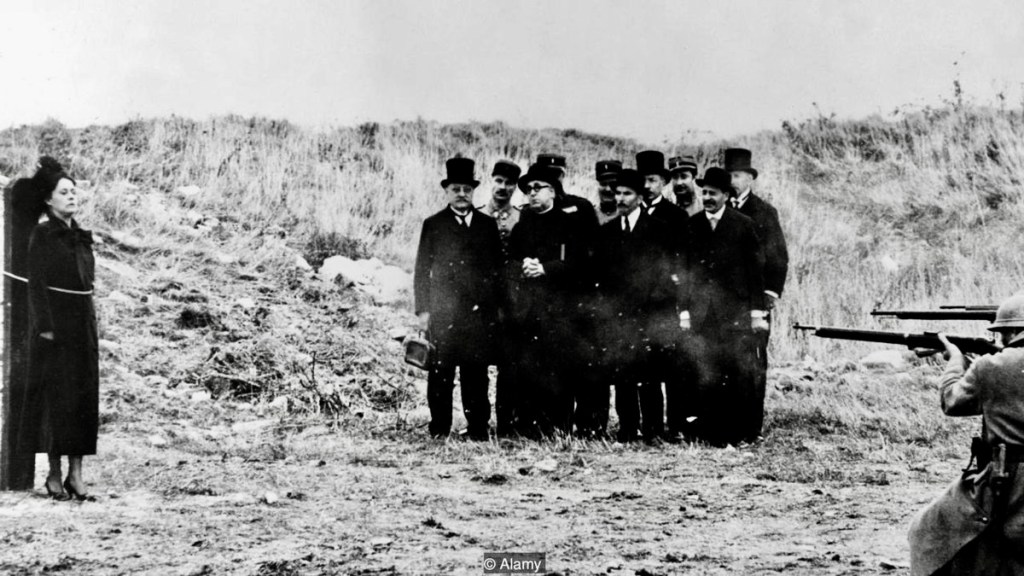
Mata Hari, Agent H21 was not a success with critics or the public but it remains a handsome showcase for the actress as well as a treat for the eyes and ears with its ravishing production design by Claude Pignot (Les Creatures, Mississippi Mermaid) that faithfully recreates the Belle Epoque era. The evocative black and white cinematography is by Michel Kelber, who lensed such masterpieces as Jean Cocteau’s Les Parents Terribles (1948) and Max Ophuls’ Lola Montes (1955).
If the lush romantic score is reminiscent of musical cues from Jules and Jim, it’s because Georges Delerue, a frequent Truffaut collaborator, wrote the scores for both. Last but not least, the costume design was overseen by Pierre Cardin and probably received more attention than the film itself.
Overall, Mata Hari, Agent H21 looks like a lavish, grade A production but feels like a B-movie genre exercise. Still, it is a worthy contribution to the cinematic depictions of the infamous spy who continues to fascinate historians and filmmakers. Besides the aforementioned Garbo and Dietrich versions of the Mata Hari legend, Sylvia Kristel (Emmanuelle) played her in Curtis Harrington’s final film, Mata Hari (1985) and there have been countless other books, documentaries and feature films about the temptress.
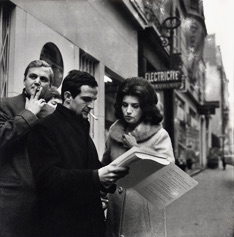
This was the second feature by Jean-Louis Richard and he only directed four films (Moreau starred in two of them, including the 1969 melodrama Le Corps de Diane). He was much better known as a character actor (he made over 60 films) and a screenwriter, who collaborated with Truffaut on four films including Day for Night (1973), an Oscar nominee for Best Screenplay. As for Truffaut, you can see evidence of his influence throughout Mata Hari, Agent H21 as well as cameo appearances by some of his favorite actors: Jean-Pierre Leaud, Marie Dubois and Charles Denner.
Mata Hari, Agent 21 is not currently available on any format in the U.S. but if you own an all-region DVD/Blu-ray player, you might be able to find a DVD version (in French, no English subtitles) from international sellers. You can also purchase a nice DVD-R copy with English subtitles from European Trash Cinema.
Other websites of interest:
https://www2.bfi.org.uk/news-opinion/sight-sound-magazine/comment/obituaries/jeanne-moreau-obituary
http://www.frenchfilms.org/review/mata-hari-agent-h21-1964.html
https://www.bbc.com/culture/article/20171020-who-was-the-real-mata-hari
https://www.biography.com/performer/mata-hari



